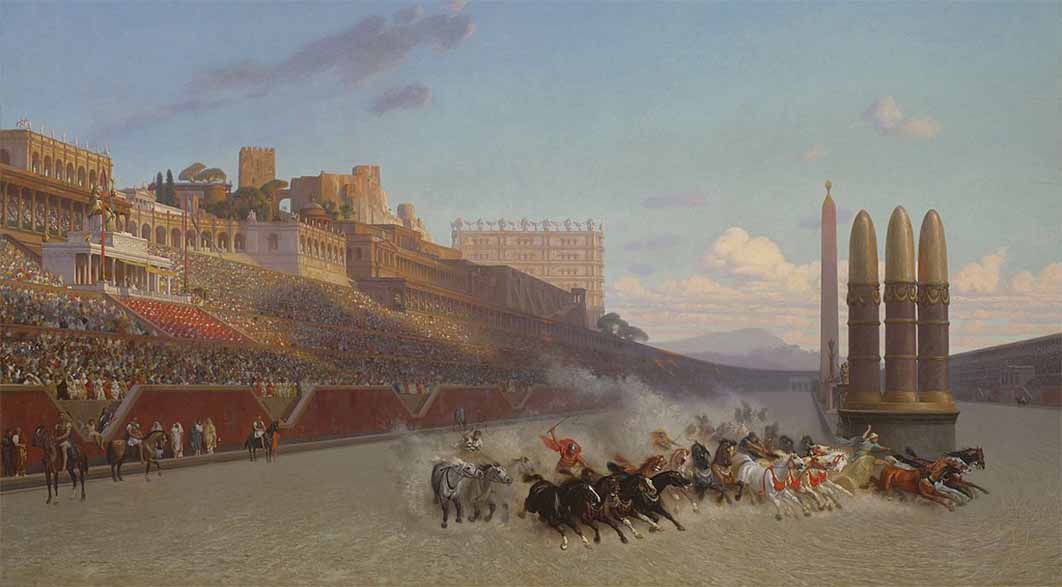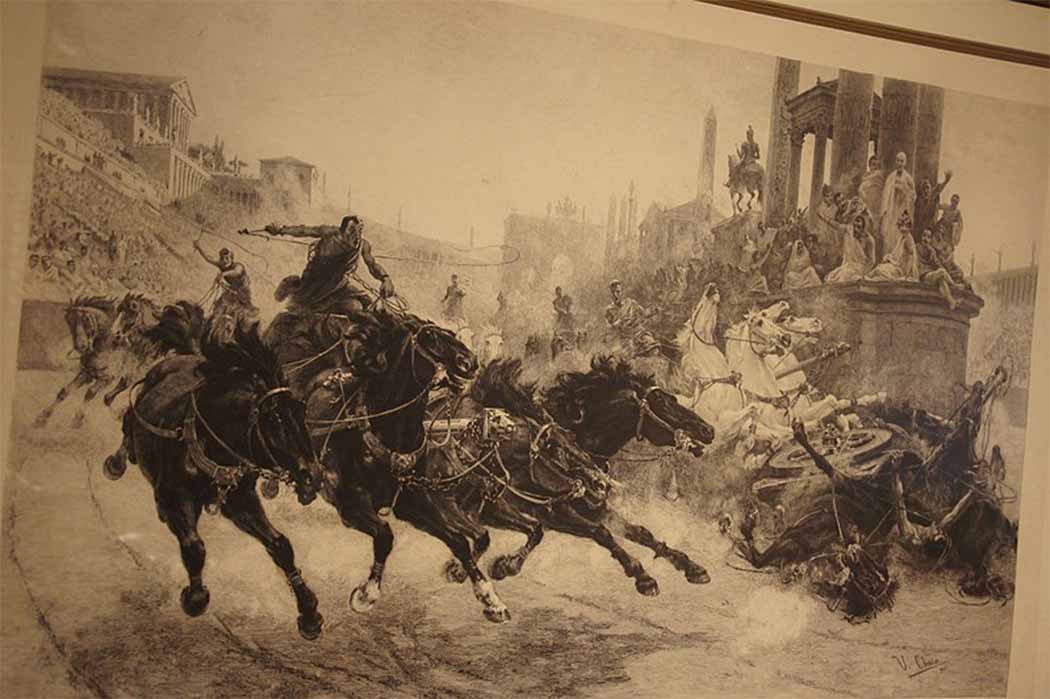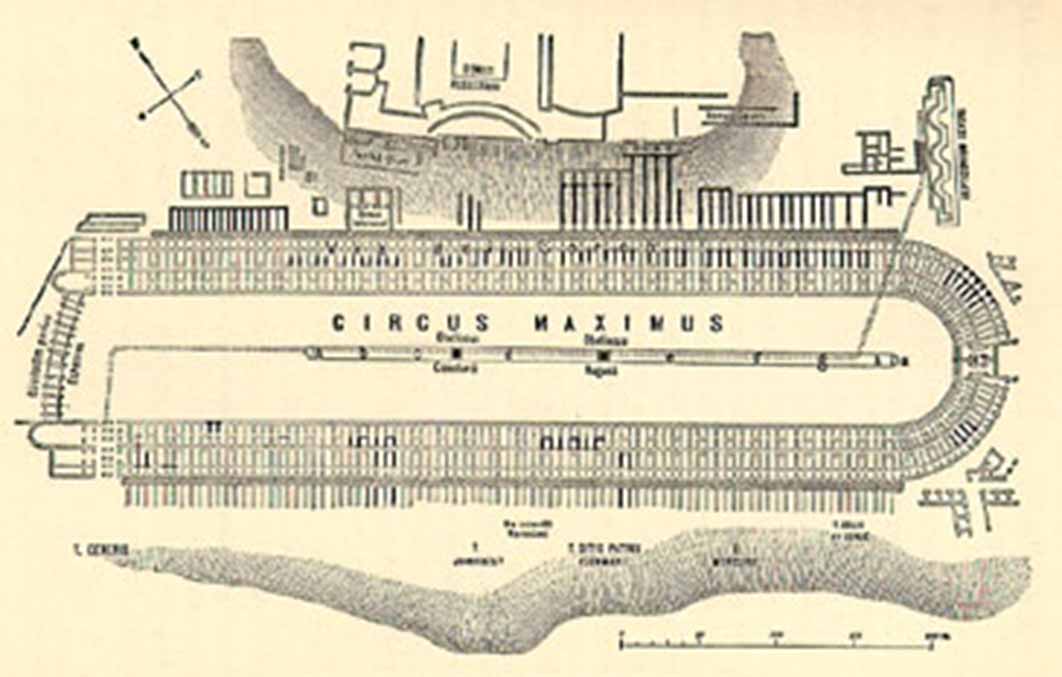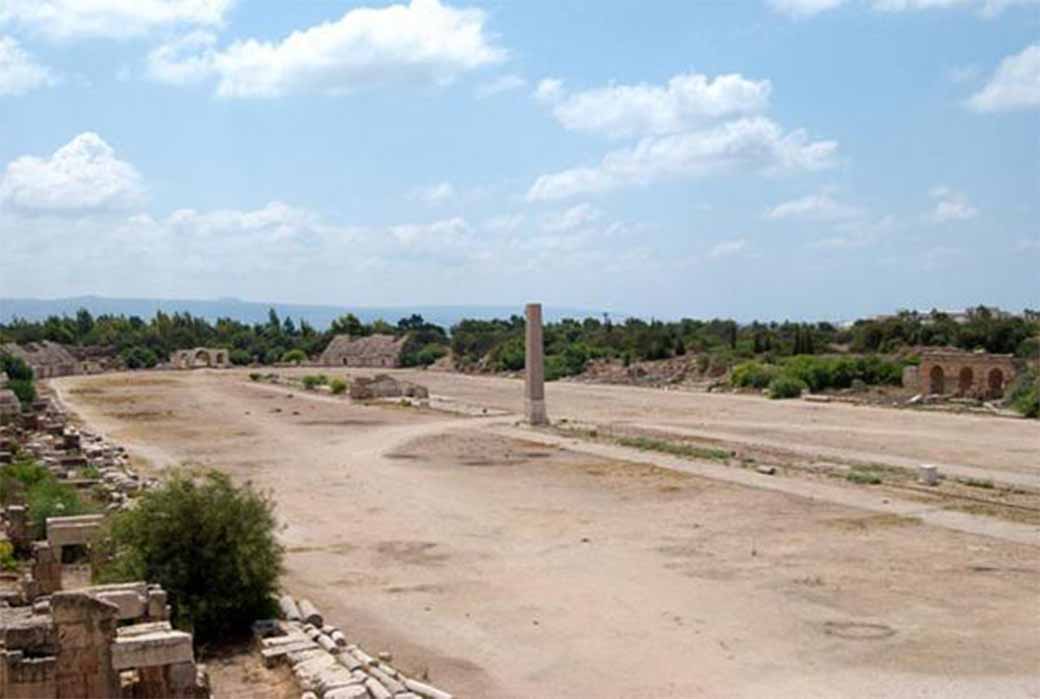
The Life Of A Celebrity Roman Chariot Horse
“The horses burst through the sky and with swift-hooved feet cut a dash through the clouds, which blocked their way as borne on wings they passed the east wind.” (Ovid, Metamorphoses II.157–60) The Formula One of the Roman world was the high-adrenalin sport of chariot racing where rival teams of superstar charioteers and horses destroyed the opposition in front of thousands of roaring fans. It may seem strange to skip forward to 20th-century Hollywood now, but it is here that we can get some idea of just how risky chariot racing was. The closest we can get to the reality of this Roman sport is by taking a look at what was perhaps the most dangerous shoot in film history: the chariot race in the 1925-silent movie Ben-Hur.

Depiction of the famous chariot race crash of Ben Hur (Carrera de carros romanos fotograbado) (Poniol/ CC BY-SA 3.0)
The fact that the film industry had established no animal rights laws yet means the experience of the horses in Ben-Hur might be comparable to those on ancient circus tracks. During filming, a cash prize was offered to the stuntman who rode his chariot into first place, and second unit director B. Reeves Eason did not worry himself about the welfare of the horses on set: ‘If it limped, they shot it.’
This attitude, and the carrot of the cash reward, ramped up the risk-taking and resulted in a violent, crash-bang chariot race, which, by the end of shooting, saw the deaths of over one hundred horses. The final scene of the race featured a spectacular choreographed crash with five horses killed in this wreck alone. On one of the dangerous turns in the track – this time, totally unchoreographed – chariots and horses piled into the wreck and a photographic still of the accident – dead horses, smashed chariots and stuntmen sprawled and injured – was used in publicity shots for the film. It certainly reconstructs the dangers of this ancient sport and gives us an idea of just how perilous chariot racing was, particularly on those hazardous turns.

A plan of the Circus Maximus. The starting gates are to the left, and a conjectured start-line cuts across the track, to the right of the nearest meta. (Public Domain)
The Circus Maximus
With over 60 racecourses spread throughout its empire, from Carthage in modern-day Tunisia to tracks in Spain, Portugal and Egyptian Alexandria, charioteers and horses thrilled crowds across the Roman world. But if you were a top chariot horse breeder or a first-rate charioteer, the Circus Maximus in Rome was the place to aim for. This was the biggest and most impressive stadium and it was here that the premier horses raced.
- 2000-Year-Old Bronze Toy Provides Clues on How the Best Roman Chariots were Constructed to Win Races
- Superweapon of the Ancient World: A History of Chariots
- 2,000-Year-Old Cooling System for Chariot Horses Unearthed at Ancient Carthage Site
With galleries three storeys high, the Circus Maximus could hold more spectators than the capacity of both Manchester United’s and Manchester City’s football stadiums combined. A crowd of 150,000 watched from stands surrounding the great horseshoe-shaped course. As the air filled with the sounds of trumpet calls, cheering, shouting, cracked whips and horses’ hooves trampling the sunbaked track, and the sights of flying manes, swirling dust, jostling horses and dramatic crashes, the atmosphere at a chariot race would have been a thrilling experience. In the same way as football clubs have teams of workers behind the scenes, a crowd of professionals kept the chariot wheels turning: stable managers, stable assistants, grooms, vets, blacksmiths, senior charioteers, juniors, cartwrights and apprentices, as well as talent scouts on the lookout for potential chariot stars of the future.






